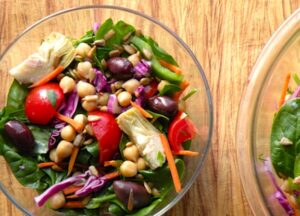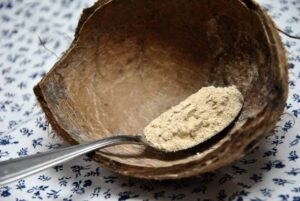The food you eat plays a crucial role in your health. Certain foods can even help in the prevention and treatment of diabetes. In diabetes, the cells of the body cannot get the sugar they need. Glucose, a simple sugar, is the body’s main fuel.
It is present in the blood even if you don’t eat any sugary foods, because the foods we eat are broken down into glucose. A hormone called insulin signals the body’s cells to let glucose in. In people with diabetes, glucose cannot get into the cells where it is needed.
Type 1 and Type 2 Diabetes
People with type 1 diabetes do not have enough insulin to signal the cells to let in glucose, so it builds up in the blood stream. People with type 2 diabetes or who are at high risk for diabetes are said to be insulin resistant, meaning that while there is enough insulin present, the cells aren’t paying very close attention to the signal.
Being above one’s healthy weight and choosing a fatty diet increase the likelihood of insulin resistance. Both types of diabetes are reaching epidemic proportions: An average American born in 2000 has a one in three chance of developing diabetes, according to the Centers for Disease Control.
Healthy foods for controlling blood sugar levels
Low-fat, fiber-rich diets built from legumes, vegetables, whole grains, and fruits help individuals avoid diabetes and control blood sugar levels. Such diets can also prevent complications in people who already have diabetes. By utilizing a low fat diet with Dexcom's blood glucose meter, people with diabetes can ensure that they are keeping their blood sugars low.
Choosing the right foods can make a world of difference to your health. Look for delicious, minimally processed foods from plant sources. Here are ten tasty choices for the prevention and management of diabetes:
- Mixed Greens with Apples and Walnuts — This low glycemic index fruit is a great choice, along with fresh apricots, peaches, and pears. The glycemic index (GI) is a measure of how quickly a food releases its sugars. Foods with low GI raise blood sugar levels more slowly than high-GI foods. It’s helpful to raise blood sugar slowly so that your body can properly remove them from the blood. Walnuts are high in important omega-3 fatty acids, which do not adversely affect glycemic control, unlike the saturated fats found in meats and cheeses. Omega-3 fatty acids also help keep your heart healthy by decreasing triglyceride levels in the blood and reducing the risk of fatal cardiac events.
- Steamed Artichokes — Serve this beautiful vegetable upright on a plate with rice wine vinegar as a dipping sauce. Artichokes are low in calories, nearly fat free, and delicious. They’re also rich in fiber, which slows down the absorption of natural sugars from the starchy foods we eat and has been shown to reduce insulin resistance.
- Hummus Dip with Baby Carrots — Hummus is a hearty dip made from chickpeas, sesame seed paste, garlic, and lemon. Chickpeas provide protein and fiber, while sesame seeds are a great source of vitamin E. Vitamin E is an antioxidant that can help protect and improve circulation in the eyes. Use carrots to dip with and get double the eye- and anti-oxidant protection from the beta-carotene in the carrots. People with diabetes frequently develop eye problems, particularly diabetic retinopathy, or damage to the retina. This can lead to a gradual loss of vision.
- Old-Fashioned or Irish Oats with Fresh Strawberries — Here’s a breakfast that fills you up without filling you out. It’s also a good source of vitamin C, vitamin B6, and soluble fiber. Vitamin C is an antioxidant and a potent eye protector, while vitamin B6 may help prevent diabetic retinopathy (retina damage). Soluble fiber, in addition to helping keep blood sugar under control, can help lower blood cholesterol levels. People at risk for diabetes—and those already coping with it—have a high risk for heart disease. Therefore, it’s important to choose meals that decrease cholesterol levels.
- Quinoa Tabouli— This protein-rich whole grain can help head off those carbohydrate cravings with a healthy choice. Some individuals crave muffins, cookies, cakes, and white bread—all foods that raise blood sugar levels unnecessarily. Tasty and healthier whole-grain foods can satisfy the need for carbohydrates.
- Mushroom Barley Soup— Barley has the lowest glycemic index of any grain, and mushrooms are tasty and magnesium-rich. Magnesium helps maintain nerve cells and may also play a role in preventing diabetic retinopathy (retina damage).
- Edamame (boiled fresh soybeans in the pod) — A delicious, hearty, protein- and fiber-rich snack that is fun to eat and chock-full of disease-fighting phytosterols (a plant compound that can lower cholesterol, among other things). Look for fresh edamame at your local farmer’s market, or check the frozen vegetable case in the supermarket. Most kids love them.
- Fruity Spinach Salad— An attractive salad decorated with sunflower seeds, oranges, sweet red pepper, and cucumbers and flavored with raspberry vinaigrette fat-free dressing makes a delicious first course or side dish. Spinach is great for magnesium; sunflower seeds provide vitamin E, selenium, and magnesium; and oranges and red peppers are good sources of vitamin C. Selenium is an important antioxidant. This mineral protects the cells of the heart and blood vessels from damage, which is important because of diabetes’ strong association with heart disease.
- Curried Cauliflower and Peas — This dish is low in fat, high in potassium (which lowers blood pressure), rich in disease-fighting phytochemicals, and high in flavor. Serve it as a main dish with brown rice and a side salad for a simple but delicious meal.
- Basmati and Wild Rice Pilaf— Whole grains and nuts are good sources of chromium. Chromium works with the hormone insulin to get glucose into the cells, where we can use it for energy. A deficiency in chromium can lead to high blood glucose levels. Chronically high blood sugar levels damage the body, especially the eyes, kidneys, and nerves.
Contributed by The Physicians Committee for Responsible Medicine. Visit their site for lots of news and recipes pertaining to plant-based diets.
- For more tips on plant-based nutrition, make sure to browse VegKitchen’s Nutrition page.
- For lots more features on healthy lifestyle, please explore VegKitchen’s Healthy Vegan Kitchen page.






otis etser says
I am a diabetic and have a low sodium diet. Is there a link or book I can get that show the nutritional values for a vegetarian diet. Thanks. Otis
Nava says
Hi Otis, sorry for the delayed approval - this somehow went under my radar. I don't know the book that well, but Dr. Neil Barnard has an excellent reputation. Maybe this will be the place to start - Dr. Barnard's Program for Reversing Diabetes: http://www.amazon.com/exec/obidos/asin/1594868107/vegkitchenblog-20 -- wish I could be more helpful!
Aunt Mary says
"Fruity Spinach Salad.. . Spinach is great for magnesium;"
Your body cannot absorb magnesium from raw spinich. No nutrition from raw spinich can be absorbed.
And your link is broken.
diabetic diet says
Diabetes answer to type 2 sufferers really is dependent upon physical activity fueled with the right nutrition. The natural treatments above could be included right into a low index meal plan alongside daily exercise to help the patient lose weight while gradually repairing one's body's defective metabolism.